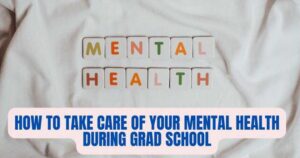Childhood Mental Health in the U.S. 2025
The state of childhood mental health in the United States has become an increasingly urgent public health concern in recent years. With growing awareness of how early-life mental and emotional challenges can shape long-term well-being, families, educators, healthcare providers, and policymakers are paying closer attention to the psychological health of young Americans. Mental health conditions such as anxiety, depression, ADHD, and behavioral disorders affect millions of children and adolescents across the nation. According to the CDC, roughly 1 in 5 children ages 3 to 17 have been diagnosed with a mental, emotional, or behavioral disorder, highlighting the widespread nature of this issue and the need for expanded resources and early intervention.
At the same time, many children across the U.S. continue to demonstrate strong signs of resilience and positive mental health. Indicators such as affection for caregivers, curiosity in learning, emotional regulation, and positive social interactions remain high, particularly in early childhood. However, as children grow older, flourishing indicators tend to decline, and mental health conditions become more prevalent. This developmental shift underscores the importance of sustained mental health support throughout all stages of childhood. Addressing these concerns requires a multi-layered approach that includes family engagement, school-based mental health services, access to professional care, and community-level support systems that collectively help safeguard the mental wellness of the next generation.
Facts About Childhood Mental Health in the U.S. 2025
| Mental Health Indicator | Statistic | Age Group | Source |
|---|---|---|---|
| Children with diagnosed mental health conditions | 21% | 3-17 years | CDC 2021 |
| Children showing all flourishing indicators | 78% | 6 months-5 years | CDC 2022-2023 |
| School-age children showing all flourishing indicators | 60% | 6-17 years | CDC 2022-2023 |
| Most common childhood conditions | Anxiety (11%), Behavior disorders (8%), Depression (4%) | 3-17 years | CDC 2022-2023 |
| Children showing affection to caregivers | 96% | 6 months-5 years | CDC 2022-2023 |
| Children bouncing back from setbacks | 82% | 6 months-5 years | CDC 2022-2023 |
| Children showing learning curiosity | 95% | 6 months-5 years | CDC 2022-2023 |
| Children smiling and laughing regularly | 99% | 6 months-5 years | CDC 2022-2023 |
The data presented in the table offers a comprehensive snapshot of childhood mental health in the United States as of 2025. One of the most pressing insights is that 21% of children aged 3 to 17 have been diagnosed with a mental health condition, according to CDC 2021 data. The most common diagnoses include anxiety (11%), behavior disorders (8%), and depression (4%), reflecting the growing emotional and behavioral challenges faced by American youth. These figures underscore the need for greater awareness, early screening, and accessible treatment options. However, there is a contrastingly positive picture during early childhood, with the majority of children showing high levels of emotional well-being and developmental strength between the ages of 6 months to 5 years.
Specifically, 78% of children aged 6 months to 5 years demonstrate all flourishing mental health indicators, such as 96% showing affection toward caregivers, 99% smiling and laughing regularly, and 95% expressing curiosity for learning. These statistics suggest a strong foundation for emotional health in early childhood, driven by nurturing environments and positive developmental conditions. However, this percentage drops to 60% among school-age children (6–17 years), signaling the emergence of greater psychological pressures as children grow older. The contrast highlights the importance of sustaining support systems—both at home and in schools—to maintain and strengthen mental well-being as children transition through critical growth stages.
Current Childhood Mental Health Conditions in the U.S. 2025
| Mental Health Condition | Overall Prevalence | Male Prevalence | Female Prevalence | Age Range |
|---|---|---|---|---|
| Anxiety Problems | 11% | 9% | 12% | 3-17 years |
| Behavior Disorders | 8% | 10% | 5% | 3-17 years |
| Depression | 4% | 3% | 6% | 3-17 years |
| ADHD | Data varies by source | Higher in males | Lower in females | 3-17 years |
| Autism Spectrum Disorder | Data varies by source | Higher in males | Lower in females | 3-17 years |
The prevalence of mental health conditions among American children reflects significant gender differences that parents and healthcare providers must understand. Anxiety disorders affect 12% of females compared to 9% of males, while behavior disorders are more common in males at 10% versus 5% in females. Similarly, depression affects 6% of females compared to 3% of males in the 3-17 age group, indicating the need for gender-specific approaches to mental health screening and treatment.
These statistics represent only diagnosed conditions and do not capture the full scope of mental health challenges facing American youth. Many children experience symptoms that may not meet diagnostic criteria but still impact their daily functioning, academic performance, and overall well-being. The CDC emphasizes that diagnosed conditions do not tell the complete story about mental distress in children, as many youth may experience symptoms without receiving proper diagnosis or treatment. This highlights the critical importance of improved access to mental health services and reduced stigma surrounding mental health care for children and families.
Early Childhood Mental Health Development in the U.S. 2025
| Mental Health Indicator | Percentage | Age Group | Time Frame |
|---|---|---|---|
| Children showing all flourishing indicators | 78% | 6 months-5 years | Current (2022-2023) |
| Children showing affection to caregivers | 96% | 6 months-5 years | Usually/always |
| Children bouncing back from setbacks | 82% | 6 months-5 years | Usually/always |
| Children showing learning curiosity | 95% | 6 months-5 years | Usually/always |
| Children smiling and laughing | 99% | 6 months-5 years | Usually/always |
| School-age children showing all flourishing indicators | 60% | 6-17 years | Current (2022-2023) |
Early childhood represents a critical period for mental health development, with the foundation for emotional regulation and social skills being established during these formative years. Nearly 4 out of 5 children ages 6 months to 5 years exhibit all four indicators of flourishing, demonstrating that the majority of young children in America are developing positive mental health characteristics. This high percentage reflects the natural resilience and adaptability of young children when provided with appropriate care and support.
The individual flourishing indicators reveal remarkable strengths in early childhood development. 99% of young children smile and laugh regularly, while 96% show affection and tenderness toward caregivers, indicating strong emotional bonding and expression capabilities. Additionally, 95% demonstrate curiosity and interest in learning, and 82% bounce back quickly from disappointments, showing natural resilience that can be nurtured throughout childhood. These statistics underscore the importance of maintaining supportive environments during early childhood to preserve and strengthen these positive mental health indicators.
Developmental Mental Health Patterns in the U.S. 2025
| Mental Health Pattern | Younger Children | Older Children | Trend |
|---|---|---|---|
| Flourishing indicators | 78% (6 months-5 years) | 60% (6-17 years) | Decreasing with age |
| Anxiety prevalence | Lower in younger children | Higher in older children | Increasing with age |
| Depression rates | Rare in early childhood | 4% (3-17 years overall) | More common with age |
| Behavior disorders | 8% overall (3-17 years) | More common in males | Gender differences emerge |
| Learning interest | 95% (6 months-5 years) | 83% (6-17 years) | Slight decrease with age |
| Emotional regulation | 82% bounce back easily | 72% stay calm under pressure | Challenges increase |
The developmental trajectory of childhood mental health reveals important patterns that inform prevention and intervention strategies. Mental health conditions generally become more common with increased age, with the percentage of children showing all flourishing indicators decreasing from 78% in early childhood to 60% in school-age years. This trend highlights the importance of early intervention and the need to understand how various factors during childhood development can impact mental health outcomes.
The data shows that while 99% of young children naturally smile and laugh, and 95% show learning curiosity, these positive indicators face challenges as children grow older. School-age children maintain 83% interest in learning and 72% ability to stay calm under challenges, suggesting that while some decline occurs, the majority of children continue to demonstrate resilience. Understanding these developmental patterns helps parents, educators, and healthcare providers recognize when additional support may be needed and implement age-appropriate interventions to maintain positive mental health trajectories throughout childhood.
Childhood Mental Health Treatment Access in the U.S. 2025
| Treatment Access Indicator | Percentage | Age Group | Time Frame |
|---|---|---|---|
| Children with diagnosed mental health conditions | 21% | 3-17 years | Ever diagnosed (2021) |
| Children receiving mental health services | Data varies by condition | 3-17 years | Current access patterns |
| Early intervention services | Limited data available | 3-8 years | Current (2023) |
| School-based mental health support | Varies by district | 5-17 years | Current availability |
| Pediatric mental health provider availability | Shortage documented | 0-17 years | Current system capacity |
Access to appropriate mental health treatment for children remains a significant challenge across the United States, with particular gaps in early childhood services. While 21% of children ages 3-17 have been diagnosed with mental health conditions, access to specialized pediatric mental health care varies dramatically by geographic location, insurance coverage, and family resources. The shortage of qualified child and adolescent mental health professionals creates long waiting lists and limited treatment options for families seeking help.
Early intervention services are particularly crucial for young children, as research consistently shows that addressing mental health concerns during early childhood leads to better long-term outcomes. However, many communities lack adequate resources for comprehensive early childhood mental health screening and intervention programs. The integration of mental health support within school systems has shown promise, but implementation varies widely across districts and states, creating disparities in access to care for children from different communities and socioeconomic backgrounds.
Childhood Protective Factors and Resilience in the U.S. 2025
| Protective Factor | Percentage | Age Group | Time Frame |
|---|---|---|---|
| Children with positive adult relationships | Data varies by age | 3-17 years | Current (2023) |
| Children in supportive family environments | Majority of children | 3-17 years | Current assessment |
| Children participating in structured activities | Varies by community | 5-17 years | Current participation |
| Children with strong peer relationships | Age-dependent patterns | 6-17 years | Current social connections |
| Children in safe neighborhood environments | Geographic variations | 3-17 years | Current living conditions |
| Children with access to educational support | School-dependent | 5-17 years | Current educational resources |
Protective factors play a crucial role in promoting resilience and positive mental health outcomes among children of all ages. Strong relationships with caring adults serve as one of the most significant protective factors, providing children with emotional support, guidance, and stability during challenging times. Research consistently shows that children who have at least one stable, supportive adult relationship demonstrate better mental health outcomes and greater resilience in the face of adversity.
Family environments that provide consistent emotional support, clear boundaries, and open communication create the foundation for healthy childhood mental health development. Additionally, participation in structured activities such as sports, arts programs, and community organizations offers children opportunities to develop social skills, build confidence, and establish positive peer relationships. These protective factors work together to create a comprehensive support system that helps children navigate developmental challenges and build the emotional tools necessary for lifelong mental wellness.
Childhood Experiences and Mental Health in the U.S. 2025
| Experience Type | Impact on Mental Health | Age Group | Prevention Focus |
|---|---|---|---|
| Positive Childhood Experiences (PCEs) | Protective against mental health conditions | 0-17 years | Family and community support |
| Adverse Childhood Experiences (ACEs) | Risk factor for mental health conditions | 0-17 years | Trauma-informed care |
| School experiences | Significant impact on daily functioning | 5-17 years | Educational support systems |
| Peer relationships | Crucial for social development | 6-17 years | Social skills development |
| Community connections | Influence sense of belonging | 3-17 years | Community engagement programs |
| Cultural and family traditions | Support identity development | 0-17 years | Cultural responsiveness |
Positive Childhood Experiences (PCEs) serve as powerful protective factors that can significantly reduce the likelihood of mental health conditions in children. Research demonstrates that the more positive experiences a child has, the lower their risk for developing diagnosed mental health conditions, regardless of their exposure to adverse experiences. These positive experiences include feeling supported by family, having opportunities to help others, feeling safe in their community, and participating in community traditions and cultural activities.
Adverse Childhood Experiences (ACEs) represent potentially traumatic events that can have profound long-term impacts on mental and physical health. However, the presence of strong protective factors and positive experiences can mitigate the negative effects of ACEs, demonstrating the importance of comprehensive approaches to supporting children who have experienced trauma. Prevention efforts focus on strengthening families, improving community resources, and ensuring that all children have access to safe, stable, and nurturing environments that promote healthy development and resilience.
Conclusion and Implications for Childhood Mental Health in the U.S. 2025
The comprehensive data on childhood mental health in the United States presents a complex picture that requires nuanced understanding and multifaceted approaches. While 21% of children ages 3-17 have been diagnosed with mental health conditions, the majority of American youth demonstrate resilience and positive mental health indicators. The statistics reveal that anxiety disorders, behavior disorders, and depression are the most common mental health challenges, with significant gender differences in prevalence rates that must inform targeted intervention strategies.
The encouraging findings about early childhood development show that 78% of young children exhibit all flourishing indicators and 99% smile and laugh regularly, demonstrating the natural resilience and joy present in early childhood. However, the decline to 60% of school-age children showing all flourishing indicators highlights the importance of maintaining supportive environments throughout childhood development. Moving forward, efforts must focus on expanding access to early childhood mental health services, strengthening protective factors such as positive adult relationships and family support, and implementing comprehensive school-based mental health programs to ensure that all American children have the opportunity to thrive and maintain their natural capacity for resilience and positive mental health throughout their developmental years.
Disclaimer: The data research report we present here is based on information found from various sources. We are not liable for any financial loss, errors, or damages of any kind that may result from the use of the information herein. We acknowledge that though we try to report accurately, we cannot verify the absolute facts of everything that has been represented.







